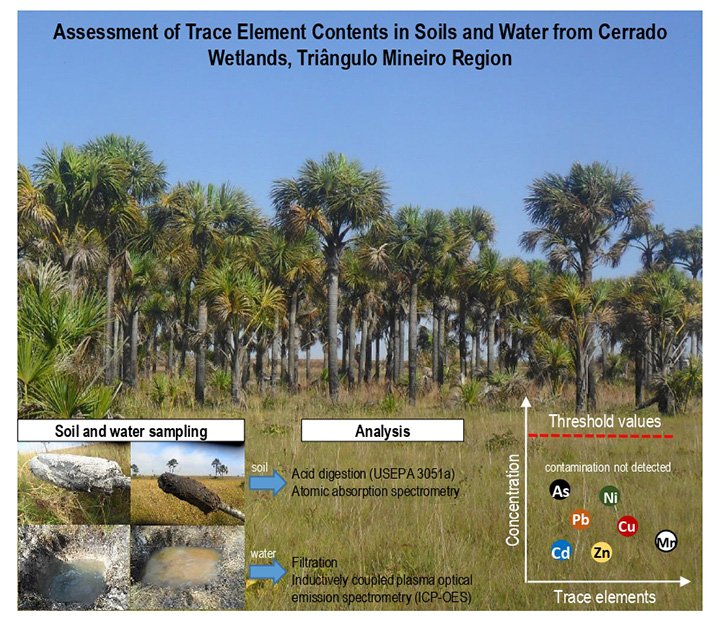Volume 43, 2019
Timing and Splitting of Nitrogen Side-Dress Fertilization of Early Corn Hybrids for High Grain Yield
08/mar/2019
ABSTRACT Currently, most nitrogen fertilizer is side-dressed when corn is in the four (V4) to eight (V8) expanded leaf stage. However, recent studies have shown that modern hybrids take up high amounts of nitrogen during grain filling. This indicates that a late nitrogen fertilization, at the time of crop flowering, may be important to optimize corn agronomic performance. This study aimed to evaluate the effect of the timing and splitting of nitrogen side-dress application on the agronomic performance of early […]
Rhizobial Inoculation and Molybdenum Fertilization in Peanut Crops Grown in a No Tillage System After 20 Years of Pasture
07/jan/2019
ABSTRACT: Peanut (Arachis hypogea) is an important legume grain consumed by humans and utilized for effective nutrient cycling in a diverse cropping system. Areas that have been cultivated with perennial pasture for decades may have nutritional deficiencies and lack a sufficient population of atmospheric nitrogen-fixing bacteria. Molybdenum is an essential micronutrient that is part of the enzyme nitrogenase contained within symbiotic Bradyrhizobium bacteria, which are responsible for fixing nitrogen in legumes. Our objective was to evaluate the effects of application […]
Decomposition and Nutrient Release of Cover Crops in Mango Cultivation in Brazilian Semi-Arid Region
24/abr/2019
ABSTRACT Knowledge of the decomposition dynamics of aboveground phytomass and its release of nutrients in mixtures of cover crops as well as the impact on the soil tillage system is fundamental for the sustainable management of agroecosystems. This work aimed to evaluate whether soil tillage and the choice of cover crops cultivated in the interrows can be technological strategies to increase dry biomass production, increase the capacity to add carbon, and improve macronutrient cycling in a mango ( Mangifera indica […]
Spatial and Temporal Potential Groundwater Recharge: the Case of the Doce River Basin, Brazil
07/jan/2019
ABSTRACT: Little is known about the groundwater recharge potential of weathered tropical catchments, where increasing water uptake is widespread to meet various water demands. This study aimed to estimate the volume of groundwater recharge of the Doce River Basin, Minas Gerais, Brazil. The BALSEQ model was applied to calculate the water balance over a period of two years (2007-2009). Evapotranspiration, runoff, and potential groundwater recharge (PGR) were calculated, using daily data on rainfall, potential evapotranspiration, and plant-available water. A soil […]
Impacts of Pig Slurry Applied to Two Different Soils on Nutrient Transport by Runoff
07/jan/2019
ABSTRACT: Runoff in agricultural areas with intensive application of pig slurry can transport significant amounts of nutrients. This study evaluates the effects of different pig slurry (PS) application rates (0, 50, 100, and 200 m3 ha-1) on nutrient loss through runoff during soybean cultivation under no-tillage. It was conducted at two sites in southern Brazil, one on an Alfisol (27° 43′ south and 50° 3′ west) and one on an Inceptisol (27° 47′ south and 50° 18′ west). The PS […]
Effects of Simulated Nitrogen Deposition and Precipitation Manipulation on Soil Microorganisms in the Desert Steppe of Northern China
07/jan/2019
ABSTRACT: Soil microorganisms are influenced by climate change. However, the effect of climate change on soil cultivable bacteria are unclear. In this study, the composition and diversity of the soil cultivable bacterial community were explored by a dilution–plate method, PCR, and 16S rRNA sequencing in a desert steppe of northern China after repeated NH4NO3 amendments and precipitation manipulation for seven years. The experimental treatments were as follows: control (CK), N addition (+N), N addition plus water addition (+N+W), and N […]
Humic Substances and Chemical Properties of an Acrisol Amended with Vermicomposted Vegetal and Animal Residues
13/maio/2019
ABSTRACT Vermicomposted vegetal and animal residues are rich in nutrients and humic substances and thus can be applied to the soil as a source of functionalized organic matter (OM) and as an alternative to chemical fertilizers. In Southern Brazil, many animal and vegetal residues are easily accessible. Therefore, this study aimed to evaluate alterations in soil chemical properties and OM chemical composition in response to the application of local vermicomposted residues. The vermicomposts of: cattle manure (CM), sheep manure (SM), […]
Do Aggregate Size Classes of the Subsurface Soil Horizon Have Different Chemical/Mineralogical Properties?
06/fev/2019
ABSTRACT Variations in chemical and mineralogical properties of a soil can occur at short vertical and horizontal distances. The objective of the present study was to evaluate the chemical and mineralogical soil properties of different aggregate classes from young (Ustrochrept) and highly weathered (Acrustox) soils from the state of Paraná, Brazil. Undisturbed blocks (0.20 ×0.20 ×0.20 m) of soils were separated into aggregate classes: Acrustox – 8.0-4.0 mm; 4-2 mm; 2.0-0.5 mm; 0.5-0.2 mm; and <0.2 mm; and Ustrochrept – […]
Assessment of Trace Element Contents in Soils and Water from Cerrado Wetlands, Triângulo Mineiro Region
24/abr/2019
ABSTRACT In the Brazilian Cerrado biome, there are wetlands locally known as “Veredas”, which are swampy plains between hills and rivers. Since the 1970’s, the Cerrado biome has been gradually converted to livestock, crop, or forestry production. Until now, very few studies were conducted to evaluate the baseline contents of trace elements in Cerrado wetland soils. Due to their position in the landscape (bottom lands), the wetlands are potentially susceptible to contamination by runoff and/or leaching from surrounding areas at […]
Optimal Simulation of the Land-Use Structure Based on the Local Ecological Environment: the Case of Huanghua City in Hebei Province, China
10/abr/2019
ABSTRACT The overuse of land has resulted in a sharp decline in ecological functions, affecting the environment as it relates to the existence and sustainable development of the whole biosphere. This work aims to evaluate the ecological and economic efficiencies of the land-use structure. A simulation model, CLUE-S (Conversion of Land-Use and its Effects at Small Region Extent), and an integrated model based on the MOP (Multi-Objective Program) and CLUE-S were applied to assess the suitability of unutilized lands in […]

